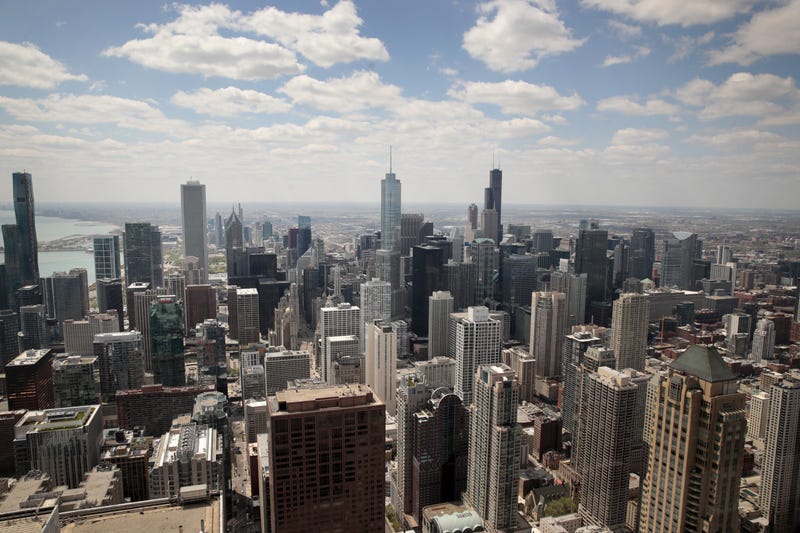
CHICAGO (WBBM NEWSRADIO) — The most recent quarterly report from the Chicago Loop Alliance on downtown economic recovery showed a milestone was reached in the last three months of 2022: Office occupancy in the Loop is just over 50% of what it was in 2019.
Although having just over half of the Loop’s office workers return might seem low, Chicago Loop Alliance CEO Michael Edwards said it’s an important milestone.
“We’re seeing people coming back,” said Edwards. “I was on a train this morning; it was very crowded.”
One of the Chicago Loop Alliance’s many business-oriented functions is tracking a number of key metrics concerning the downtown economy, including office occupancy.
“We were at about 55% occupancy — what we call, ‘human occupancy,’” Edwards said.
Human occupancy being the key in tracking back-to-work metrics. Edwards said they used data collected by Chicago-based Kastle Systems, a property management company that tracks key card usage in downtown offices.
“Most people that … work downtown use some kind of [card] system to get into their office,” Edwards said. “[Kastle] has been publishing, since the pandemic, how people are using those cards.”
Kastle Systems compared the current data with its 2019 captures, and that’s how the Loop Alliance found its recovery percentages. Kastle Systems also tracks other major U.S. cities’ office occupancy, which showed that Chicago is on par with Los Angeles and New York City.
“It’s kind of interesting, it’s sort of a demographic shift,” Edwards said. “I’m on the train every day, Monday through Friday, and the train is full of young people. They’re younger people that are building a career. They want the social life associated with working, and they want to be mentored — and you can’t do that from home.”
Edwards added that there could also be a shift in the office space market, one that would benefit downtown office building owners, along with the restaurants and shops around them.
Before the pandemic, he said, companies had been drifting toward newly built spaces in areas like Fulton Market and west of downtown.
“What we’ve noticed recently is the cost of being in Fulton market is so much more than it is in the Loop — which is ridiculous, really — that people are beginning to make the economic decision that, ‘We’re going to stay in the Loop because it’s a better deal,’” Edwards said.
Edwards now forecasts that reaching 85% office occupancy recovery may be possible in about one year’s time.
Listen to WBBM Newsradio now on Audacy!
Sign up and follow WBBM Newsradio
Facebook | Twitter | Instagram


